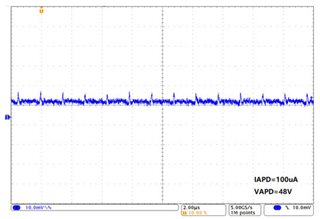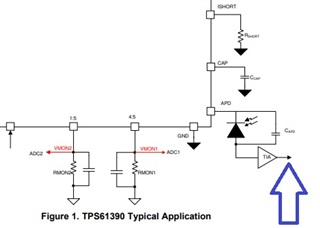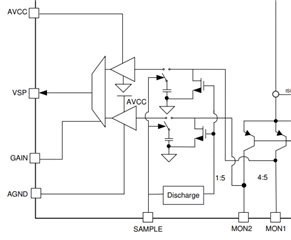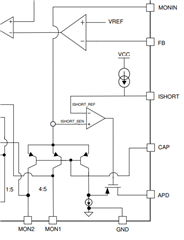Other Parts Discussed in Thread: TPS61391
I am trying to make a boost converter for an Avalanche Photodiode (APD) for instrumentation applications. The LT3482 datasheet has a graph showing 100µV ripple on the first page. ADI/Linear Tech doesn't say what the voltage and current are.

There is a TI app note by Helen chen, TPS61390 Boost Converter with Low APD Bias Voltage Ripple, that shows ripple in the 5mV range at 100µA output.

I am almost certain the 100µV is too good to be true.
My application is for instrumentation. My APD is a multi-pixel photon counter (MPPC), an array of APDs in one package. So my bias current will be very low. I'm going to filter the bias voltage as much as possible. Does TI have any app notes on low-noise boost converters, esp for low-noise APD applications?




